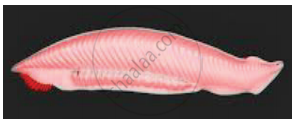Advertisements
Advertisements
Question
Identify the animal given in the picture and write features of its phylum/class.
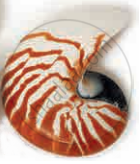
Solution
The organism in the given picture is Nautilus and it belongs to phylum Mollusca.
Features of phylum Mollusca:
- Habitat: They are aquatic or seen in marshy places. Few of them are terrestrial.
- Forms: Molluscs are either free-living or sedentary.
- Body plan: These are soft-bodied and show tube within a tube type of body plan.
- Body symmetry: Most of the Molluscs show bilateral symmetry but few are asymmetrical due to torsion (twisting).
- Body division: Body consists of head, foot and the visceral mass. Visceral mass is enclosed in a thick, muscular fold of body wall called a mantle. Mantle secretes a hard-calcareous shell, that may be external or internal or absent. Muscular foot is present ventrally.
- Digestive system: Digestive system is well-developed and complete with anterior mouth and posterior anus. Buccal cavity has a rasping organ called radula (helps in feeding), which is provided with transverse rows of teeth.
- Respiration: In aquatic forms, numerous feather-like gills called ctenidia, help in aquatic respiration. Terrestrial forms may show the presence of lungs.
- Circulatory system: Circulatory system is of open type (except in Sepia, where it is of the closed type). Blood contains a copper-containing blue coloured respiratory pigment called haemocyanin.
- Excretion: Excretion occurs by kidney like structures, also called ‘Organ of Bojanus’.
- Nervous system and sense organs: Nervous system has three pairs of ganglia. All these ganglia are interconnected by commissures and connectives.
- Sense organs: Sense organs such as eyes for vision, tentacles for tactile sensation and osphradia for testing purity of water is present.
- Sexual reproduction: Sexes are usually separate. Animals of this phylum are mostly oviparous and the development is direct or indirect.
e.g. Pila, Spisula (Bivalve), Octopus (devilfish), Sepia (cuttle fish), Chaetopleura (Chiton), Pinctada (Pearl oyster), Loligo (Squid), Aplysia (Sea hare), Dentalium (Tusk shell).
APPEARS IN
RELATED QUESTIONS
Choose the correct option.
In Ascaris, ___________.
The circulatory system has evolved from open to closed type in Animal kingdom. Which Phylum can be called first to represents closed circulation?
Answer the following question.
Cnidarians and Ctenophorans are both diploblastic. Which other character do they have in common, which is not found in other phyla?
Draw a neat labelled diagram.
Catla
Match the following.
| Phylum | Characters |
| i. Annelida | a. Tube feet |
| ii. Mollusca | b. Ostia |
| iii. Ctenophora | c. Radula |
| iv. Porifera | d. Parapodia |
| v. Echinodermata | e. Comb plates |
Identify the animal given in the picture and write features of its phylum/class.

Identify the animal given in the picture and write features of its phylum/class.
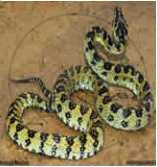
Identify the animal given in the picture and write features of its phylum/class.
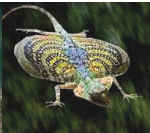
Identify the animal given in the picture and write features of its phylum/class.
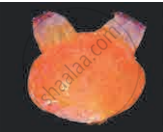
Identify the animal given in the picture and write features of its phylum/class.
